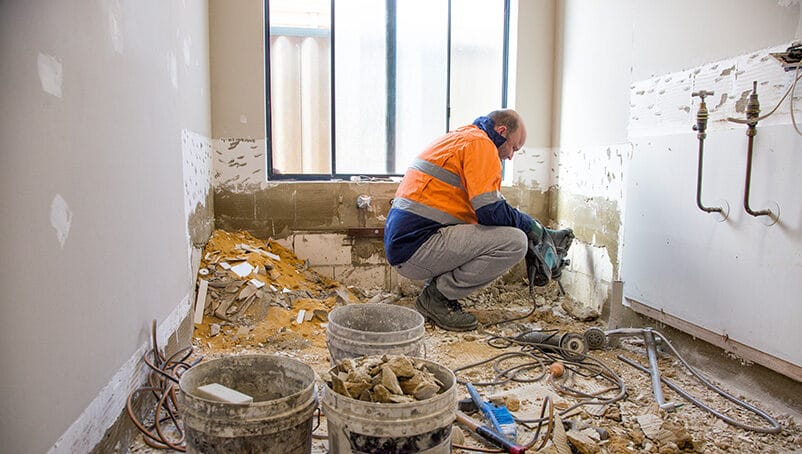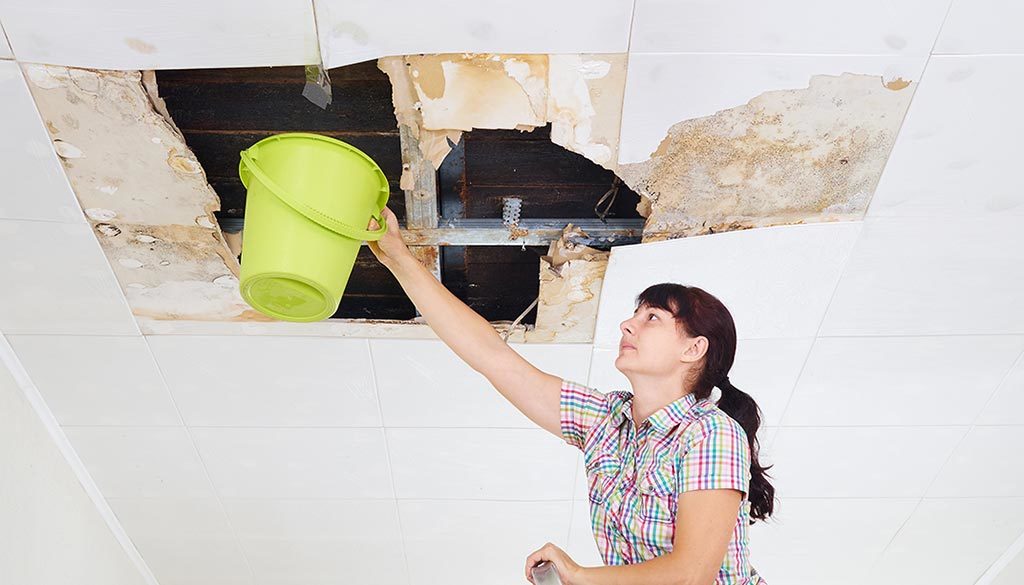Water Mitigation Company with Proven Track Record of Success in Restoration
The Process of Water Damage Cleanup: Guaranteeing Your Home Is Recovered Successfully
Water damage can be a complicated obstacle for property owners, necessitating a meticulous and structured cleaning process to restore security and functionality. A comprehensive assessment is essential to recognize the level of the damages and determine the appropriate remediation measures. Following this, efficient water removal methods play a pivotal duty in reducing more injury. The nuances of drying out, disinfecting, and eventual restoration are just as important and typically overlooked. Comprehending these phases can make a considerable distinction in the outcome of your home's reconstruction, triggering a closer consider what each action involves.
Examining the Damage
Upon uncovering water damages, the primary step is to thoroughly examine the extent of the effect. This initial assessment is important, as it aids figure out the needed actions for effective clean-up and reconstruction. Begin by evaluating the affected locations, including walls, ceilings, floors, and personal items, to determine the source of the water invasion, whether from flooding, leakages, or condensation.
Recording the damage is crucial for both insurance claims and intending repair efforts - damage restoration services. Usage photographs and written notes to catch the seriousness of the damage, keeping in mind any damaged architectural elements and products. Pay special attention to areas that might not be right away noticeable, such as behind wall surfaces and under carpets, as concealed wetness can result in more problems, consisting of mold development
In addition, analyze the timeline of the water direct exposure. The longer the products stay wet, the better the potential for damage. Comprehending the duration of direct exposure will educate the necessity of remediation initiatives. Inevitably, a thorough evaluation prepares for an effective water damage cleanup procedure, making certain that all impacted areas are addressed successfully and completely.
Water Removal Techniques

Specialists usually utilize submersible pumps for larger volumes of water, which can quickly relieve flooding in cellars or other influenced areas. For smaller sized amounts, wet/dry vacuum cleaners are usually made use of to remove recurring wetness from rugs and hard surfaces. Furthermore, using mobile extractors permits targeted elimination in confined areas or areas with delicate products.
In circumstances of infected water, such as sewer or floodwater, advanced removal strategies may involve the use of biohazard tools to make certain safety and security and conformity with health and wellness guidelines. High-powered extraction tools are vital in decreasing water retention in architectural products, which can cause mold and mildew growth and architectural degeneration if not resolved immediately.
Inevitably, the effectiveness of water extraction techniques plays an essential duty in the overall success of the water damage cleaning procedure, preparing for succeeding reconstruction initiatives.
Drying and Dehumidification
When standing water has actually been successfully removed, the following critical phase in the water damage clean-up process is drying out and dehumidification. This step is necessary to prevent further damages and mold and mildew development, which can occur within 24 to two days in damp atmospheres.
To attain reliable drying out, customized equipment such as industrial-grade air movers and dehumidifiers is used. Air moving companies flow air throughout wet surface areas, improving dissipation prices, while dehumidifiers reduce moisture degrees airborne, promoting a helpful setting for drying out. The combination of these devices makes sure that moisture is attracted out from floorings, walls, and furnishings, permitting them to completely dry thoroughly.
It is essential to keep track of the drying process very closely. Professionals typically make use of wetness meters to examine the moisture web content in different materials, making sure that all influenced locations reach appropriate dry skin levels. This meticulous approach aids to avoid covert moisture pockets that might bring about structural damage or unhealthy mold and mildew growth.

Cleaning and Disinfecting
After the drying out and dehumidification stage is total, the next vital action in water pop over here damages cleanup is cleaning up and disinfecting the impacted locations. This process is essential to stop the growth of mold and mildew, germs, and other virus that grow in wet atmospheres.
The cleansing phase typically entails eliminating any kind of particles, dust, and impurities from surfaces using specialized cleaning representatives. For hard surfaces, a mix of soap and water or business cleaning products is typically employed. Soft materials, such as upholstery and carpetings, may call for a lot more considerable cleansing methods, consisting of vapor cleansing or deep extraction methods, to make certain complete hygiene.

Disinfecting follows cleansing, making use of EPA-approved anti-bacterials to eliminate hazardous microbes. This action is important, specifically in locations that may have entered into contact with floodwaters or sewage, as these sources can posture significant health threats.
In addition, it is very important to address any continuing to be smells, which may need using odor neutralizers or innovative techniques like ozone treatment. Proper cleaning and sterilizing not just bring back the security and health of your home however additionally lay the foundation for successful repair and repair services in subsequent phases of the water damages cleaning procedure.
Reconstruction and Fixings

Once the evaluation is complete, reconstruction efforts can start. This usually involves fixing or replacing damaged products, ensuring that all work abides by local building regulations and standards. If drywall has been endangered, it will certainly require to be removed and changed with new product. In addition, flooring may require similar attention, relying on the degree of water exposure.
It is vital to engage skilled reconstruction specialists during this procedure, as they possess the expertise to take care of complicated fixings effectively. In addition, they can help reduce prospective future problems, such as mold and mildew growth or structural instability, therefore making sure a secure and habitable living atmosphere. Ultimately, efficient restoration and fixings restore the home's stability and enhance its overall worth.
Final Thought
To conclude, the process of water damage cleaning is important for recovering a home to its pre-damage problem. Each stage, from assessing the damages to implementing reliable water removal techniques, complied with by extensive drying, sterilizing, and necessary repairs, plays a vital duty in making sure safety and conformity with structure criteria. Efficient execution of these actions not only minimizes instant damages yet also enhances the long-lasting integrity and value of continue reading this the residential or commercial property.
Water damages can be an overwhelming obstacle for home owners, requiring a organized and precise clean-up procedure to recover safety and security and performance. Inevitably, a sewage damage detailed analysis lays the groundwork for an effective water damages cleaning process, making sure that all impacted areas are dealt with effectively and completely.
Reliable water removal techniques are vital in reducing damage and preventing more problems following a water invasion occasion.In final thought, the process of water damages cleanup is crucial for bring back a home to its pre-damage problem. Each stage, from analyzing the damage to applying efficient water extraction methods, adhered to by extensive drying, sanitizing, and essential repair services, plays an essential function in making sure safety and security and compliance with structure standards.